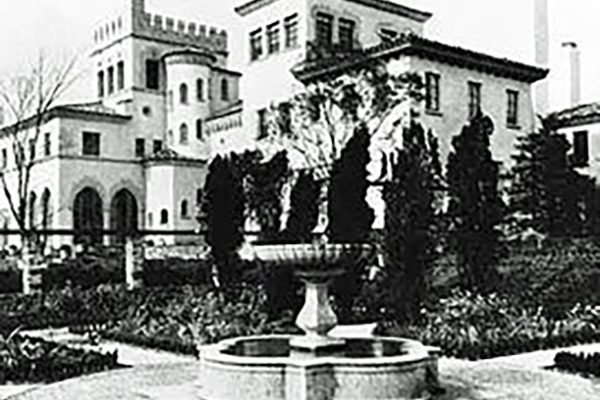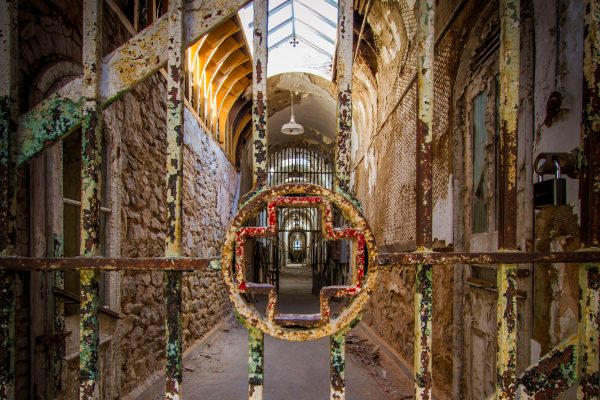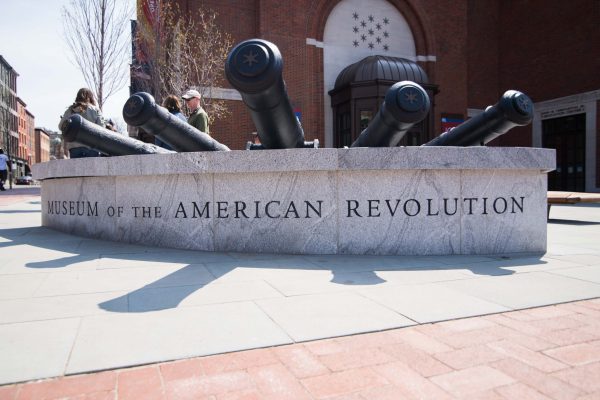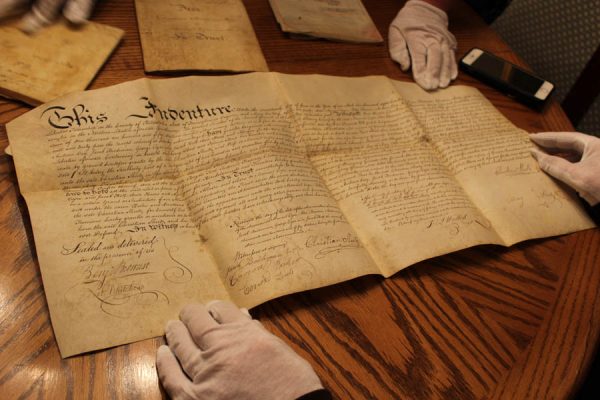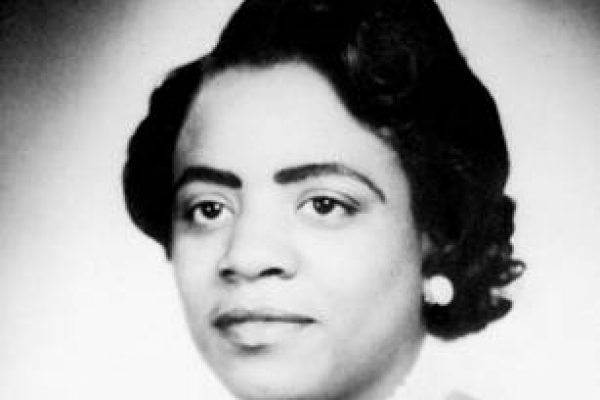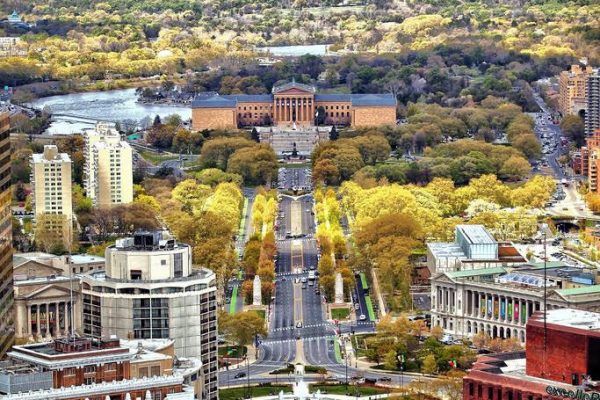KNOW YOUR HISTORY: How Philly’s 19th Century Elite Helped Bring the Tyler School of Art to Be
American society in the 1800s was not very different than today. People would be surprised to realize how similar we are to our ancestors who lived in the same cities we do, especially in regards to our social tendencies. Census.gov tells us that the median age of marriage has only increased from 26 years to 29 years for men, and it has only increased from 22 years to 27 years for women.
People enjoyed the same activities. The Chicago World Fair attracted hundreds of thousands of people who wanted to see the latest technologies and spectate at the great display of lights. This is not a far cry from the enormous tech conferences happening throughout the year these days, like SXSW.
Even the immigrants of yesteryear shared similarities with their modern-day counterparts. Immigrants would spend their life savings to enter our country. Doing whatever was necessary, they would crowd onto dirty boats and risk everything for the chance at a better life. These immigrants would relocate to avoid war, religious persecution, and find a better opportunity for their descendants to have a good economic opportunity in life. In 1901, almost 9 million immigrants entered the United States legally.
By the end of the 19th century, two thirds of our foreign-born population lived in cities. 25 percent of them lived in Philadelphia specifically. For the first time in our nation’s history, the Americans who have been in the country for generations began to look negatively upon immigrants. Before the year 1900, immigration was looked at favorably. We wanted a larger population. We wanted to build an empire. We believed that we could be stronger with greater numbers of people in the workforce. However, by the end of the 19th century, many people started thinking of themselves as Americans, and not associating themselved of their ancestral place of origin as much. In turn, feelings of nationalism and xenophobia grew.
In 1887, the American Protective Agency (APA) was founded with the sole purpose to convince Congress to “prohibit immigrants from specific countries from coming to America.” United States: A History of the Republic describes how the APA’s “biggest resentment was towards the Roman Catholics.”
Some scholars argue that people do not create opinions about others based on race, ethnicity, religious affiliation, or other forms of diversity that are found on the surface. Authors like Charles Murray would say that the biggest factor that separates people is their social status, or their “class” in America. Are you an elite? Are you working class?
In his 2012 book, “Coming Apart: The History of White America, 1960-2010”, Murray describes how people within the same race look down on each other when they do not fit into the same social class. This suggests that “elite” members of society only marry other elites. And “working class” members of society will probably marry other people in the working class. In fact, Fishtown was the example used in his book to represent the working class. While this book was criticized for looking at “White America,” it does hold interesting concepts about social status in this country.
In another striking example of the similarities between Americans today and Americans of the 19th century, social class seems to be the most critical aspect in the relationships between people today. For example, when you turn on the television and hear about the latest celebrity marriage, it is most likely involving two celebrities, not just one. Rarely do you see a situation like Prince William marrying Kate Middleton, a “regular person.” Although, even in that situation, Middleton came from a family who owns a business worth about £30 million, according to CNN.
How did social class-based relationships affect the history of Philadelphia? The answer is too long to fully describe, and the examples of these relationships are too plentiful. However, we will focus on one Philadelphia story in particular to give you a sense of exactly how the echelon of a family name can predetermine your life, your impact on society, and the outcome of your descendants.
James Burnley’s book “Millionaires and Kings of Enterprise” was written in 1901 and detailed how “Some Americans…by Pluck, Foresight, and Energy Have Made Themselves Masters in the Fields of Industry and Finance.” His example of “The Philadelphia Millionaire” is William Lukens Elkins. Elkins became a prominent man in the city and country, and he made personal connections that would prove to be the most significant impact on his career.
Born in 1832, Elkins did not enter a family that was “elite.” Although he did have some family connections in Virginia, where he was related to Senator Stephen B. Elkins and West Virginia Senator William L. Elkins. From 1849 to 1852, Elkins worked as a clerk in a grocery store at 2nd Street and Girard Avenue. After learning the trade, Elkins started his own produce business with Peter Saybolt, and it became one of the largest in the United States. Part of the success of his business was his construction of the first large refrigerator in the city to extend the lifespan of fruits and vegetables. At the time, most grocers just replaced the ice above the produce shelves. He would run this business until 1861, when he decided to try his luck in other industries as well.
Elkins managed an oil business, Monument Oil Works, which would rival John D. Rockefeller’s Standard Oil. 12 years after starting his oil business, Elkins met Peter Arrell Brown Widener in 1873. Peter Widener was elected the City Treasurer and was friends with William Baldwin, a popular political figure. Baldwin introduced Elkins and Widener. The two men became friends and decided to open the Philadelphia Rapid Transit Company, a streetcar and railway business. They partnered with William Kemble, a man that worked at W. & P.P. Remington silk house at age 14 and the J.R. Jaffrey & Son lace house. Kemble opened a supply store at age 20. He opened his own lace and embroidery company a year later at 52 North Third Street. The New York Times obituary for Kemble explains that he was also appointed as a stamp agent of Philadelphia by President Abraham Lincoln, as well serving as the State Treasurer of Pennsylvania.
Philadelphiaencyclepedia.org explains that after Kemble’s death, Widener changed the business of cable cars to electric trolleys in order to adapt to the times. In 1892, Widener and Elkins opened the “first electric line on Bainbridge and Catherine.” Perhaps it was true love, or maybe it was designed to tie these families together, but in 1882, Peter’s son, George Dunton Widener, married William’s daughter, Eleanore. Together, they had three children: George Jr., Eleanore, and Harry. Harry and his father George died in the wreckage of the Titanic after it hit an iceberg April 14th, 1912 in the North Atlantic. Eleanore survived the disaster by paddling a lifeboat to safety.
Elite families continue to marry elite families, even after the first marriage. According to the May 2nd, 1920 New York Evening Telegram, Eleanore then became “the first white woman to enter the Rio Negro country” with her new husband Alexander Hamilton Rice Jr., a Harvard professor, surgeon, geographer, geologist, and South American explorer.
To further prove the point that high society families marry into one another, you can observe the son of George Widener and Eleanore Elkins. George Dunton Widener Jr. married Jessie Madeline Sloane. Jessie’s aunt married Edmund Coffin, whose child William Sloane Coffin was a vice-president for the W. & J. Sloane Company. The company weaved fine carpets and rugs and was founded by William Sloane in 1843 in New York. Edmund’s brother Henry was one of the most famous ministers in the country. William Sloane Coffin’s son would also become a famous clergyman and peace-activist.
George D. Widener’s wife Jessie also had an uncle marry into another prominent family. William Douglas Sloane married Emily Thorn Vanderbilt, the daughter of William Henry Vanderbilt, a great businessman known for doubling the fortune of his father, Cornelius Vanderbilt.
We could continue going down the Vanderbilt lineage until we end up with the great-great-great-grandson of Cornelius Vanderbilt, Anderson Cooper, who is an example of how family status continues throughout many generations. But instead, let’s go back to the Elkins name that we began with.
William Lukens Elkins had four children. His daughter Ida Amelia married Sydney Frederick Tyler, a man who had two children with another woman. The daughter of George Washington Elkins was named Stella Von Tuyl Elkins. She married George Frederick Tyler. George was the son of Sydney. Simply put, Stella married the stepson of her aunt.
The Tyler family had a long history of military service. George, Stella’s husband, descends from a captain of the revolution and a major general of the Civil War, Daniel and Frederick respectively. Stella was a sculptor who loved artwork. She and Boris Blai decided to found the Stella Elkins Tyler School of Art in Elkins Park in 1935. Elkins Park is named after William Lukens Elkins and the Elkins Estate that he had built there. After 74 years, the school had a new facility located at 13th and Norris Streets. The school is now a part of Temple University, retaining the name The Stella Elkins Tyler School of Art.
The impact that the Elkins, Widener, Sloane and Vanderbilt families have had on Philadelphia and the nation as a whole are undoubtedly significant. One has to wonder how so many people can be linked to just those few families. Basically, the location that a family lives in is probably similar to the other families that live there too. The places you go, the people you meet, and the activities you participate in are most likely going to attract other people who are similar to you as well. This is true today, and it was true through all of time. The story of William Lukens Elkins is just a small example of that phenomenon. •
